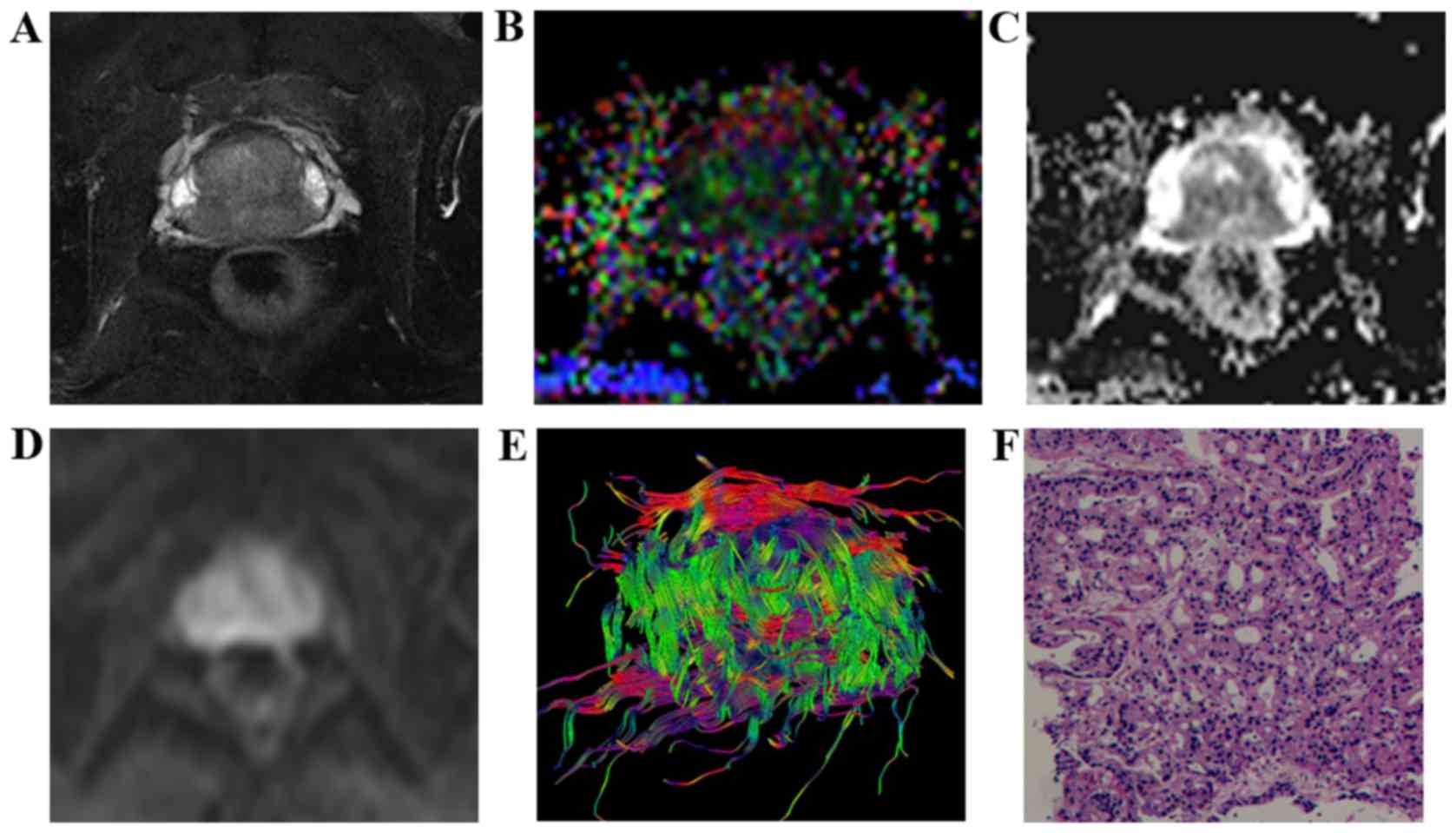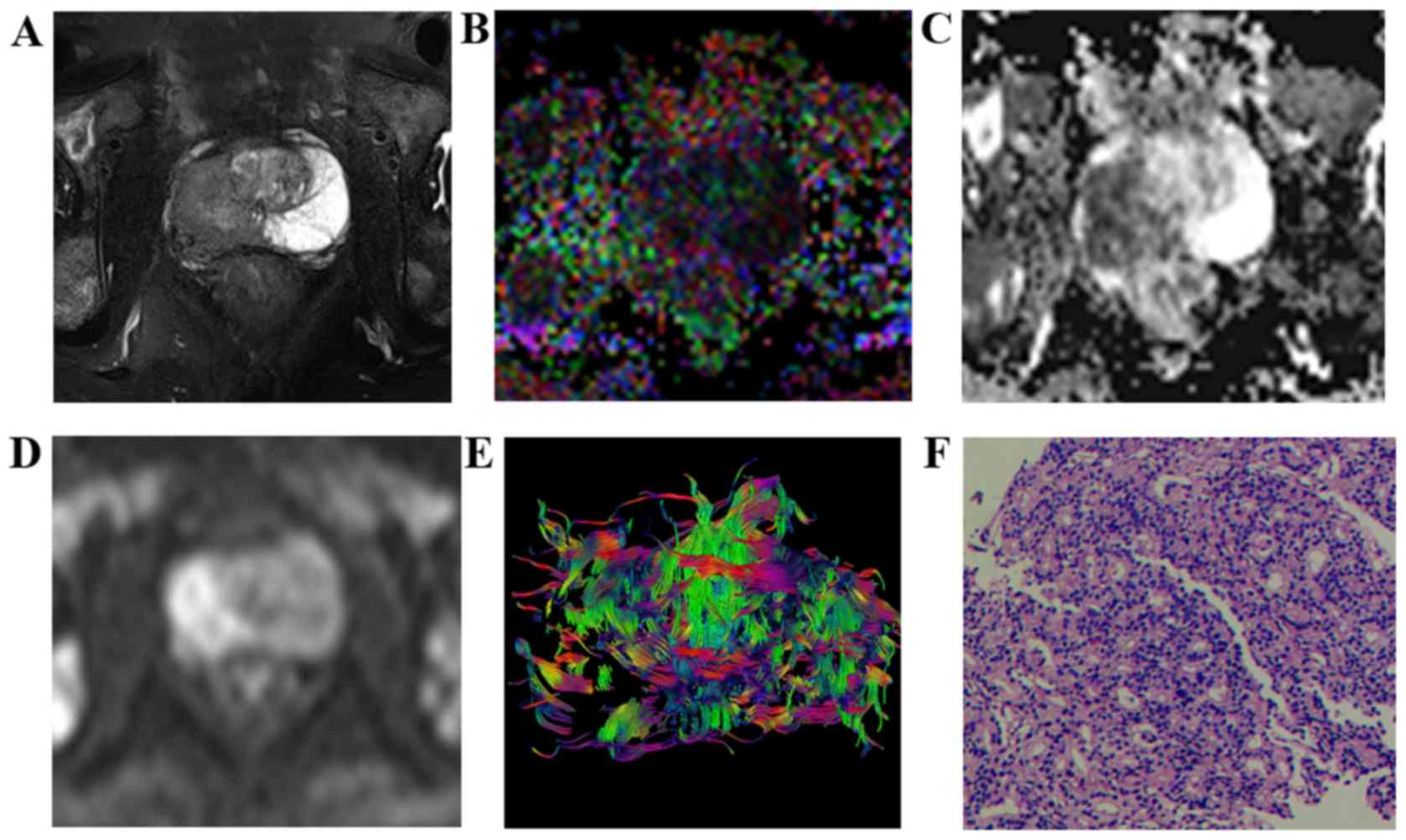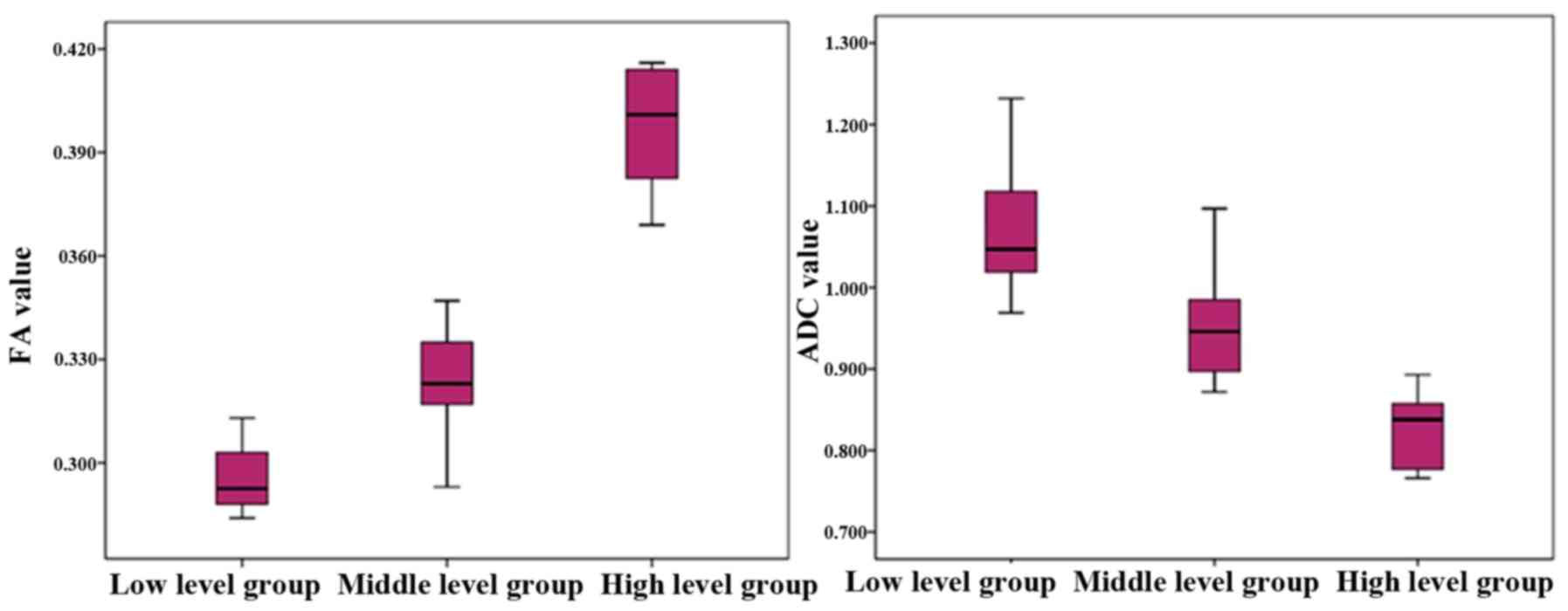|
1
|
Siegel RL, Miller KD and Jemal A: Cancer
statistics, 2017, CA Cancer J Clin. 67:1–30. 2017.
|
|
2
|
Wang YJ, Fu ZX, Wang J, et al: Incidence
and mortality of prostate cancer among residents in Luwan district
of Shanghai, 2004–2011. Chin Cancer. 26:438–441. 2017.
|
|
3
|
Heidenreich A, Bastian PJ, Bellmunt J,
Bolla M, Joniau S, van der Kwast T, Mason M, Matveev V, Wiegel T,
Zattoni F, et al: EAU guidelines on prostate cancer Part 1
Screening, diagnosis, and local treatment with curative intent
update 2013. Eur Urol. 65:124–137. 2014. View Article : Google Scholar : PubMed/NCBI
|
|
4
|
Chinese Journal of Radiology in the
diagnosis of prostatic diseases, Chinese Journal of Radiology,
editorial board of the Chinese Journal of radiology: MR examination
and diagnosis of prostate cancer. Chin J Radiol. 48:531–534.
2014.
|
|
5
|
Bazot M, Bharwani N, Huchon C, Kinkel K,
Cunha TM, Guerra A, Manganaro L, Buñesch L, Kido A, Togashi K, et
al: European society of urogenital radiology (ESUR) guidelines: MR
imaging of pelvic endometriosis. Eur Radiol. 27:2765–2775. 2017.
View Article : Google Scholar : PubMed/NCBI
|
|
6
|
Liao LH, Wang SH and Shen JH: The
formation, development and application of Gleason grading system
for prostate cancer. J Diag Pathol. 19:309–312. 2012.
|
|
7
|
Kagebayashi Y, Nakai Y, Matsumoto Y, Samma
S, Miyasaka T and Nakagawa H: Utility of diffusion-weighted
magnetic resonance imaging and apparent diffusion coefficient in
detection of prostate cancer and prediction of pathological Gleason
score. Hinyokika Kiyo. 58:405–408. 2012.(In Japanese). PubMed/NCBI
|
|
8
|
Wu CJ, Wang Q, Li H, Wang XN, Liu XS, Shi
HB and Zhang YD: DWI-associated entire-tumor histogram analysis for
the differentiation of low-grade prostate cancer from
intermediate-high-grade prostate cancer. Abdom Imag. 40:3214–3221.
2015. View Article : Google Scholar
|
|
9
|
Caivano R, Rabasco P, Lotumolo A, Cirillo
P, D'Antuono F, Zandolino A, Villonio A, Macarini L, Salvatore M
and Cammarota A: Comparison between Gleason score and apparent
diffusion coefficient obtained from diffusion-weighted imaging of
prostate cancer patients. Cancer Invest. 31:625–629. 2013.
View Article : Google Scholar : PubMed/NCBI
|
|
10
|
Bammer R, Acar B and Moseley ME: In vivo
MR tractography using diffusion imaging. Eur J Radiol. 45:223–234.
2003. View Article : Google Scholar : PubMed/NCBI
|
|
11
|
Sinha S and Sinha U: In vivo diffusion
tensor imaging of the human prostate. Magn Reson Med. 52:530–537.
2004. View Article : Google Scholar : PubMed/NCBI
|
|
12
|
Gibbs P, Pickles MD and Turnbull LW:
Diffusion imaging of the prostate at 3.0 tesla. Invest Radiol.
41:185–188. 2006. View Article : Google Scholar : PubMed/NCBI
|
|
13
|
Basser PJ, Mattiello J and LeBihan D: MR
diffusion tensor spectroscopy and imaging. Biophys J. 66:259–267.
1994. View Article : Google Scholar : PubMed/NCBI
|
|
14
|
Le Bihan D, Mangin JF, Poupon C, Clark CA,
Pappata S, Molko N and Chabriat H: Diffusion tensor imaging:
Concepts and applications. J Magn Reson Imaging. 13:534–546. 2001.
View Article : Google Scholar : PubMed/NCBI
|
|
15
|
Wang S, Kim SJ, Poptani H, Woo JH, Mohan
S, Jin R, Voluck MR, O'Rourke DM, Wolf RL, Melhem ER and Kim S:
Diagnostic utility of diffusion tensor imaging in differentiating
glioblastomas from brain metastases. AJNR Am J Neuroradiol.
35:928–934. 2014. View Article : Google Scholar : PubMed/NCBI
|
|
16
|
Schenk P, Siebert T, Hiepe P, Güllmar D,
Reichenbach JR, Wick C, Blickhan R and Böl M: Determination of
three-dimensional muscle architectures: Validation of the DTI-based
fiber tractography method by manual digitization. J Anat.
223:61–68. 2013. View Article : Google Scholar : PubMed/NCBI
|
|
17
|
Gürses B, Tasdelen N, Yencilek F,
Kılıckesmez NO, Alp T, Fırat Z, Albayrak MS, Uluğ AM and Gürmen AN:
Diagnostic utility of DTI in prostate cancer. Eur J Radiol.
79:172–176. 2011. View Article : Google Scholar : PubMed/NCBI
|
|
18
|
Gürses B, Kabakci N, Kovanlikaya A, Firat
Z, Bayram A, Uluğ AM and Kovanlikaya I: Diffusion tensor imaging of
the normal prostate at 3 Tesla. Eur Radiol. 18:716–721. 2008.
View Article : Google Scholar : PubMed/NCBI
|
|
19
|
Xia G, Gong H, Zeng X, et al: MR diffusion
tensor imaging in the diagnosis of prostate cancer. Chin J Radiol.
46:526–528. 2012.
|
|
20
|
Takayama Y, Kishimoto R, Hanaoka S, Nonaka
H, Kandatsu S, Tsuji H, Tsujii H, Ikehira H and Obata T: ADC value
and diffusion tensor imaging of prostate cancer: Changes in
carbon-ion radiotherapy. J Magne Resonance Imag. 27:1331–1335.
2008. View Article : Google Scholar
|
|
21
|
Woodfield CA, Tung GA, Grand DJ, Pezzullo
JA, Machan JT and Renzulli JF II: Diffusion-weighted MRI of
peripheral zone prostate cancer: Comparison of tumor apparent
diffusion coefficient with Gleason score and percentage of tumor on
core biopsy. AJR Am J Roentgenol. 194:W316–W322. 2010. View Article : Google Scholar : PubMed/NCBI
|
|
22
|
Li L, Margolis DJ, Deng M, Cai J, Yuan L,
Feng Z, Min X, Hu Z, Hu D, Liu J and Wang L: Correlation of gleason
scores with magnetic resonance diffusion tensor imaging in
peripheral zone prostate cancer. J Magn Reson Imaging. 42:460–467.
2015. View Article : Google Scholar : PubMed/NCBI
|
|
23
|
Gong T, Yuan SH, Li LL, et al: Study on
the correlation between prostate cancer DTI parameters and Gleason
score. Med Imag J. 24:574–577. 2014.
|
|
24
|
Wang Q, Gong T and Wang XZ: 3.0T diffusion
tensor imaging in the evaluation of prostate cancer Gleason score
value. J Clin Radiol. 34:581–585. 2015.
|

















